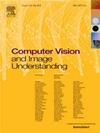Cleanness-navigated-contamination network: A unified framework for recovering regional degradation
IF 4.3
3区 计算机科学
Q2 COMPUTER SCIENCE, ARTIFICIAL INTELLIGENCE
引用次数: 0
Abstract
Image restoration from regional degradation has long been an important and challenging task. The key to contamination removal is recovering the contents of the corrupted regions with the guidance of the non-corrupted regions. Due to the inadequate long-range modeling, the CNN-based approaches cannot thoroughly investigate the information from non-corrupted regions, resulting in distorted visuals with artificial traces between different regions. To address this issue, we propose a novel Cleanness-Navigated-Contamination Network (CNCNet), which is a unified framework for recovering regional image contamination, such as shadow, flare, and other regional degradation. Our method mainly consists of two components: a contamination-oriented adaptive normalization (COAN) module and a contamination-aware aggregation with transformer (CAAT) module based on the contamination region mask. Under the guidance of the contamination mask, the COAN module formulates the statistics from the non-corrupted region and adaptively applies them to the corrupted region for region-wise restoration. The CAAT module utilizes the region mask to precisely guide the restoration of each contaminated pixel by considering the highly relevant pixels from the contamination-free regions for global pixel-wise restoration. Extensive experiments in both shadow removal tasks and flare removal tasks show that our network framework achieves superior restoration performance.
清洁导航污染网络:恢复区域退化的统一框架
区域退化图像恢复一直是一项重要而富有挑战性的任务。污染去除的关键是在未污染区域的引导下恢复污染区域的内容物。由于远程建模的不足,基于cnn的方法不能彻底地研究未损坏区域的信息,导致不同区域之间存在人工痕迹的视觉失真。为了解决这个问题,我们提出了一种新的清洁导航污染网络(CNCNet),它是一个统一的框架,用于恢复区域图像污染,如阴影,耀斑和其他区域退化。该方法主要由两个部分组成:面向污染的自适应归一化(COAN)模块和基于污染区域掩码的污染感知聚合与变压器(CAAT)模块。在污染掩模的指导下,COAN模块从未损坏区域中制定统计数据,并自适应地将其应用于损坏区域,进行分区域恢复。CAAT模块利用区域掩模精确地指导每个污染像素的恢复,通过考虑来自无污染区域的高度相关像素进行全局像素级恢复。在阴影去除任务和耀斑去除任务中进行的大量实验表明,我们的网络框架具有优越的恢复性能。
本文章由计算机程序翻译,如有差异,请以英文原文为准。
求助全文
约1分钟内获得全文
求助全文
来源期刊

Computer Vision and Image Understanding
工程技术-工程:电子与电气
CiteScore
7.80
自引率
4.40%
发文量
112
审稿时长
79 days
期刊介绍:
The central focus of this journal is the computer analysis of pictorial information. Computer Vision and Image Understanding publishes papers covering all aspects of image analysis from the low-level, iconic processes of early vision to the high-level, symbolic processes of recognition and interpretation. A wide range of topics in the image understanding area is covered, including papers offering insights that differ from predominant views.
Research Areas Include:
• Theory
• Early vision
• Data structures and representations
• Shape
• Range
• Motion
• Matching and recognition
• Architecture and languages
• Vision systems
 求助内容:
求助内容: 应助结果提醒方式:
应助结果提醒方式:


